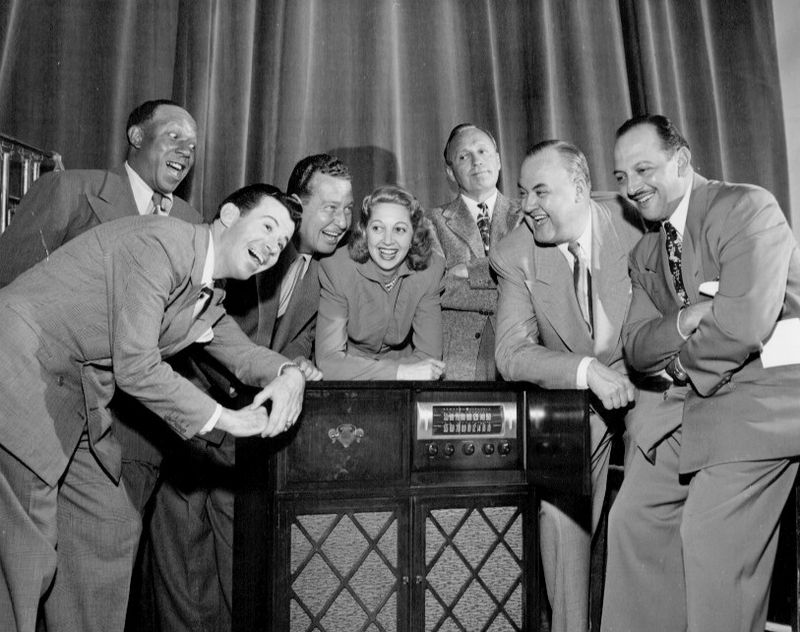Almost everyone spends their entire childhood watching cartoons. While playing with friends and family members is one thing, watching fictional characters and later acting as the same is another. Back in the day, such was the excitement of our favorite cartoons turning up that most of us can clearly remember our favorite characters and even episodes today.
Bugs Bunny being one of the most famous cartoon characters, we ought to discover what made him so special. Perhaps his voice and Mel Blanc was the man behind it.
Mel Blanc: The Famous Voice Actor of Cartoons
Early Life
Mel Blanc was born to Eva, a Jewish Russian Immigrant, and Fredrick Blank in San Francisco. He spent most of his childhood in San Francisco while moving to Portland, Oregon where he attended Lincoln High School. As he was growing up, Mel Blanc found his interest lying in dialect and voices. As a result, he began working on them when he was 10 years old.
Mel claimed that he had changed the spelling of his last name from “Blank” to “Blanc” because his teacher told him that he was going to end up just like his name “Blank”. As a young man, Mel joined the Order of DeMolay and was inducted into the Hall of Fame.
Once he graduated from high school, Mel distributed his time between leading an orchestra and performing shtick in vaudeville shows. He was only 19 when leading the orchestra and became the youngest conductor in the country.
Radio Work
Mel Blanc before stepping into the entertainment industry began his career in 1927 at the age of 19. At the time, he also made his acting debut on the KGW program The Hoot Owls. This was where Blanc first lent multiple voices for different characters catching the attention of many. Then, in 1932, he moves to Los Angeles where he married Estelle Rosenbaum before returning to Poland.
Next, in 1993, he moved to KEX with his Wife Estelle to produce and co-host his Nuts and Cobweb show. Blanc’s wife immediately recognized his talent and persuaded him to return to Los Angeles, which he did. He joined the KFWB studio owned by Warner Bros. in 1935. Although he joined The Johnny Murray Show but later switched to CBS Radio and The Joe Penner Show the same year.
Mel Blanc stepped into the spotlight due to a mishap. The recorded sounds of the automobiles failed to play on cue, forcing Mel Blanc to take up the mic and create the sound effects on his own. The audience was so impressed by the sounds that Benny decided to ditch the entire recording system and hand over the role to Blanc. Another important reason behind it was that Blanc was a regular on The Jack Benny Show.
Radio Daily magazine once wrote that Blanc specialized in over fifty-seven voices, dialects, and intricate sound effects. In 1946 alone, he was appearing in almost fifteen programs at the same time. Considering the huge success he achieved from The Jack Benny Show, Blanc came up with his own CBS Radio Network, The Mel Blanc Show.
Animated Voice During the Golden Age of Hollywood
In December 1936, Blanc joined Leon Schlesinger Productions. At the time, the production house was creating cartoon shorts for Warner Bros. Blanc was introduced by soundman Treg Brown to animation directors Bob Clampett, Tex Avery, Frank Tashlin, and Friz Freleng who happened to love his voices.
The first-ever cartoon Blanc worked on was Picador Porky as a drunken bull. It wouldn’t be long until Blanc replaced Joe Dougherty as Porky Pig’s voice in Porky’s Duck Hunt. It also marked the debut of daffy duck, voiced by Blanc as well.
As a result, Blanc became a very successful artist for Warner Bros. and voiced many characters including the famous Bugs Bunny. The character was known for eating carrots regularly while saying his catchphrase “Eh, what’s up, doc?” Blanc did the voice animation by biting into a carrot and spitting immediately into a spittoon.
Then, Blanc was hired to voice Gideon the Cat in Disney’s Pinocchio. However, later the executives decided that the cat would be mute. In addition to that, Blanc also voiced and originated the laugh of Woody Woodpecker, produced by Walter Lantz for Universal Pictures as theoretical cartoons. However, he stopped voicing Woodpecker due to an already exclusively signed contract with Warner Bros. Despite the contract, his laugh was still used until 1951 in the Woody Woodpecker cartoons.
Interesting Facts About Mel Blanc
If you have ever come across Mel Blanc’s Tombstone personally or over the internet, you will find that it has the signature Looney Tunes line “That’s All Folks”. Initially, it was spoken by Bosko an early character, and then by Porky Pig. Little did he know that the same signature line would become his most fitting tribute and appropriate send-off.
Mel Blanc was involved in a fatal accident in 1961, which left him with serious injuries. He was in a coma for two weeks and in the meantime, his son Noel was offering ghost voice services for characters. For several days, the doctors tried communicating with Blanc but to no avail. However, after watching Looney Tunes play on the TV, the doctor asked “Bugs, can you hear me?” and Blanc replied, “Yeah, what’s up doc?”.
Final Word
Throughout his career, Mel Blanc was one of the few talented individuals who was fully aware of what he possessed and was in complete control as well. At the time, voice actors barely received any credit but Blanc was an exception. Warner Bros. came up with a credit reading specifically for Mel Blanc. Today, Blanc is remembered as a man of “1000” voices and the world still finds it hard to believe that almost all cartoon characters they had enjoyed was actually one man behind the scenes. So while Blanc rests, his legacy is here to stay.
